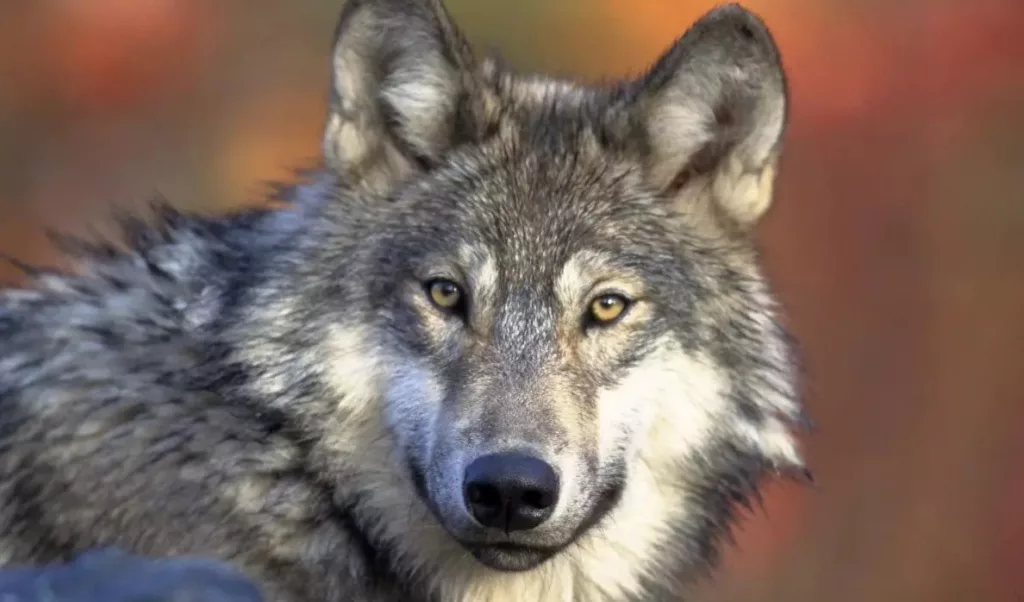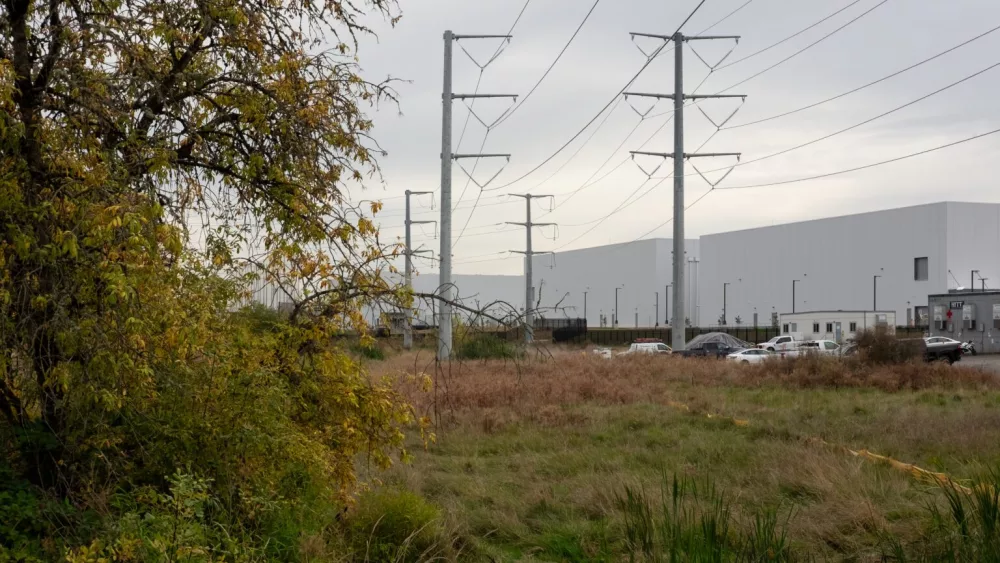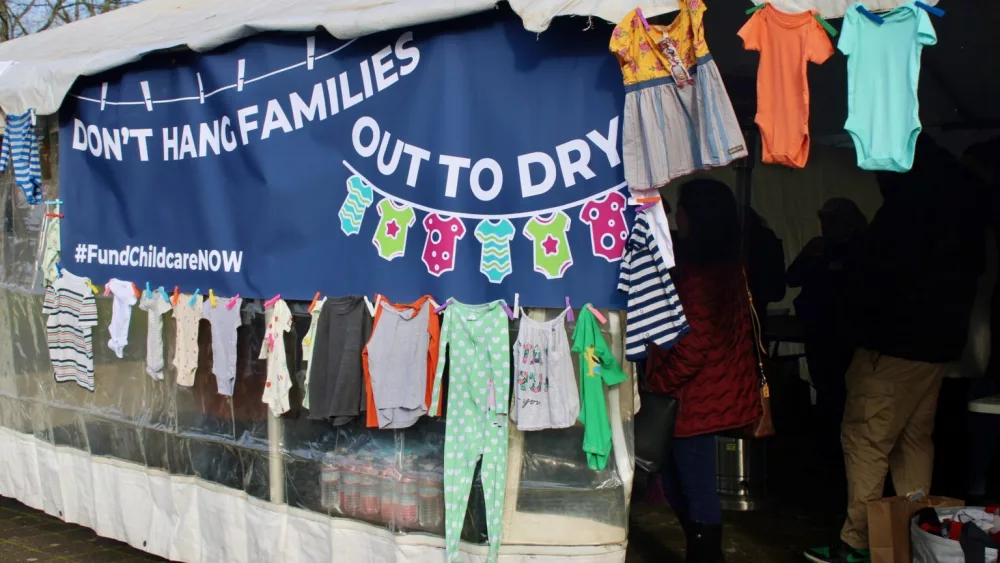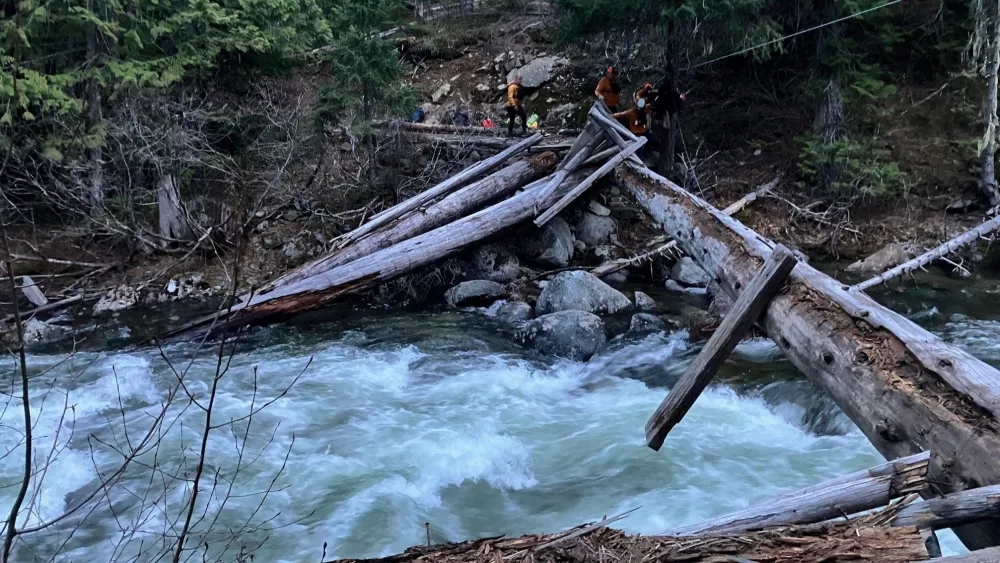OLYMPIA, WA – Washington’s wolf population is down for the first time since resident packs were confirmed to be returning to the state about 16 years ago, new figures show.
The state and tribes counted a minimum of 230 wolves in 43 packs as of Dec. 31, 2024. That’s compared to 254 wolves in 42 packs the previous year. At least 37 wolves died or were killed in the state last year, according to the Washington Department of Fish and Wildlife report.
Most of the decrease was on the Confederated Tribes of the Colville Reservation land in northeast Washington, where the wolf count decreased by 20, from 59 to 39. In the rest of the state, it slipped by four from 195 to 191.
Eighteen of the dead wolves were hunted legally on Coleville land. One was killed legally by Spokane tribal hunters. And seven wolves were poached in incidents under investigation.
“This year, I don’t feel like our mortality was up a lot from previous years,” statewide wolf specialist Ben Maletzke said during a Fish and Wildlife Commission meeting on Saturday, where he presented the report. Though he did call the unlawful wolf killings “concerning.”
The state figures show that about three-dozen wolves were killed or died each year in 2022 and 2023. In the five years leading up to 2022, annual deaths ranged from 12 to 30.
Maletzke noted that the state’s wolf population has been on an upward trend, averaging about 20% growth annually since 2008, even when factoring in last year’s decline.
“The number of packs increased in the North Cascades in 2024, and both the North Cascades and Eastern Washington Recovery regions continued to meet or exceed recovery objectives for the fifth year in a row,” he said in a statement.
Still, wildlife advocates voiced concern, highlighting a drop in packs with breeding pairs last year to 18 from 24 in 2023.
“It’s infuriating to see this dramatic decline in both the wolf population and successful breeding pairs, but it’s not shocking given the significant uptick in wolf killings over the past several years,” said Amaroq Weiss, a senior wolf advocate at the Center for Biological Diversity.
Wolves were once common in Washington, but are believed to have been mostly killed off in the state around the 1930s after they were heavily hunted for their hides and under government-sponsored programs to control them.
In 2008, a resident pack was documented in Okanogan County. Wolf numbers have been climbing since.
There are long-standing tensions over how the animals are managed, which typically pit wildlife advocates against ranchers and others who argue that the wolves are a threat to livestock.
Last year, the Fish and Wildlife report shows that the agency carried out four wolf killings after the animals had conflicts with livestock. A fifth wolf was killed when it was “caught in the act” attacking livestock.
Another wolf was killed by a cougar, one died after eating plastic.
Wolves are protected under the federal Endangered Species Act in the western two-thirds of Washington. They are covered statewide under the state’s endangered species law. Killing one of the animals without authorization can carry penalties of up to a year in jail or a $5,000 fine under the state’s law.
Last summer, the Fish and Wildlife Commission narrowly voted against downlisting wolves from “endangered” to either “threatened” or “sensitive,” moves that would have led to lower penalties for poaching and slightly easier access to permits to kill wolves that attack livestock.
“The 2024 report vindicates the Commission’s decision to maintain wolves as a state-endangered species,” said Dr. Francisco Santiago-Ávila, science and advocacy director for Washington Wildlife First.
Santiago-Ávila raised the prospect that the Trump administration could roll back federal protections for wolves. “Washington’s wolves need more protection, not less,” he said.
The Washington Cattlemen’s Association did not immediately respond to a request for comment.
The latest wolf population report from the department said last year’s report contained errors related to the wolf count on Confederated Tribes of the Colville Reservation land. Five wolves killed by hunters on tribal land were not recorded in the earlier report.
Corrected figures indicate that the Strawberry Pack should have been tallied as having three, not eight wolves. After factoring in an estimate for lone and dispersing wolves, this brought the overall 2023 wolf population figure to 254. It also decreased the number of breeding wolf pairs in the state by one.
While wolf populations have grown in eastern Washington and the North Cascades, no packs are currently residing in the Cascades south of Interstate 90 or on the Olympic Peninsula.
The state classifies these parts of the state as a single wolf “recovery region.” The report notes that at least three wolves known to have moved into the area have been killed unlawfully and no wolves were documented in these parts of the state by the end of last year.
Washington State Standard is part of States Newsroom, a nonprofit news network supported by grants and a coalition of donors as a 501c(3) public charity. Washington State Standard maintains editorial independence. Contact Editor Bill Lucia for questions: info@washingtonstatestandard.com.





